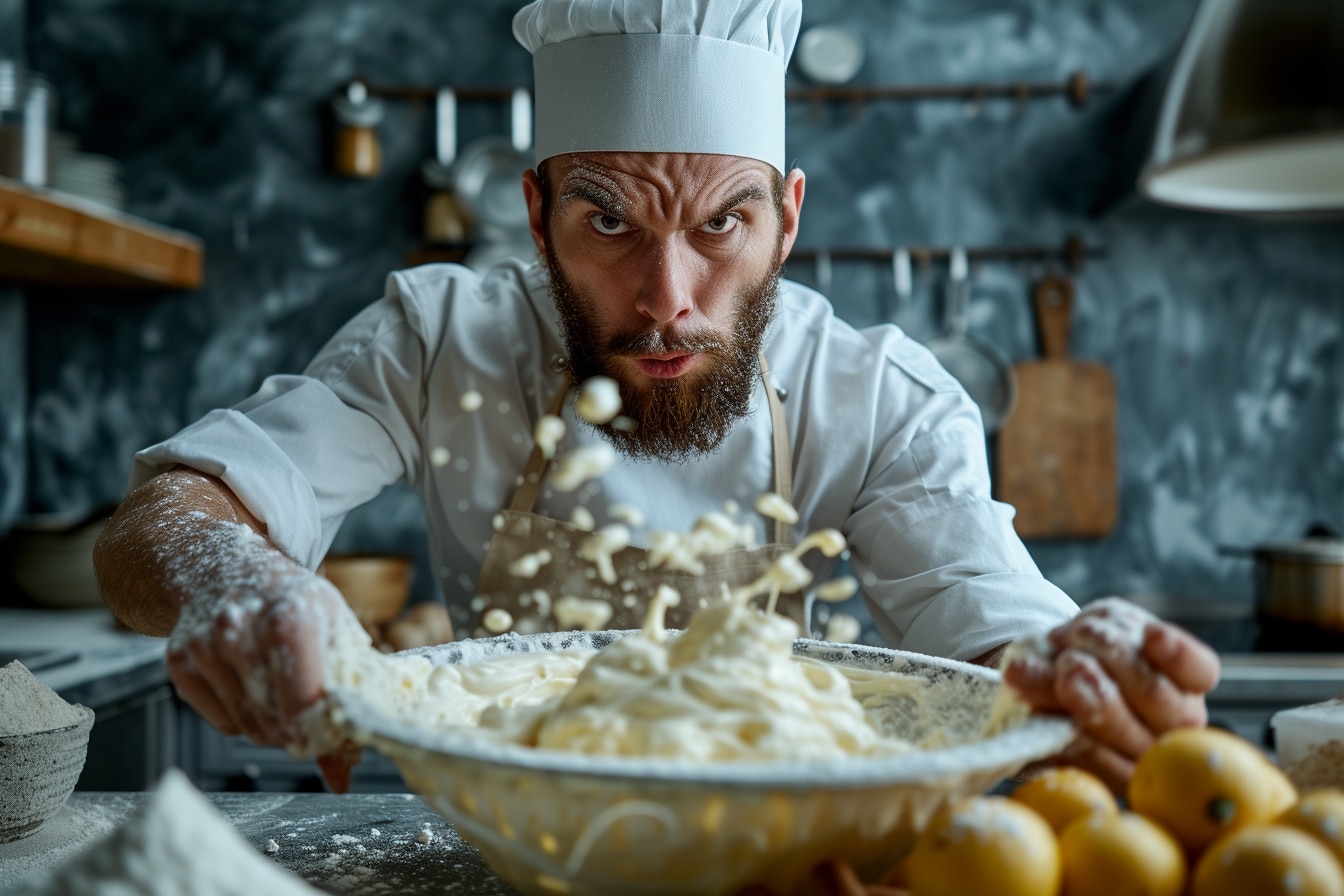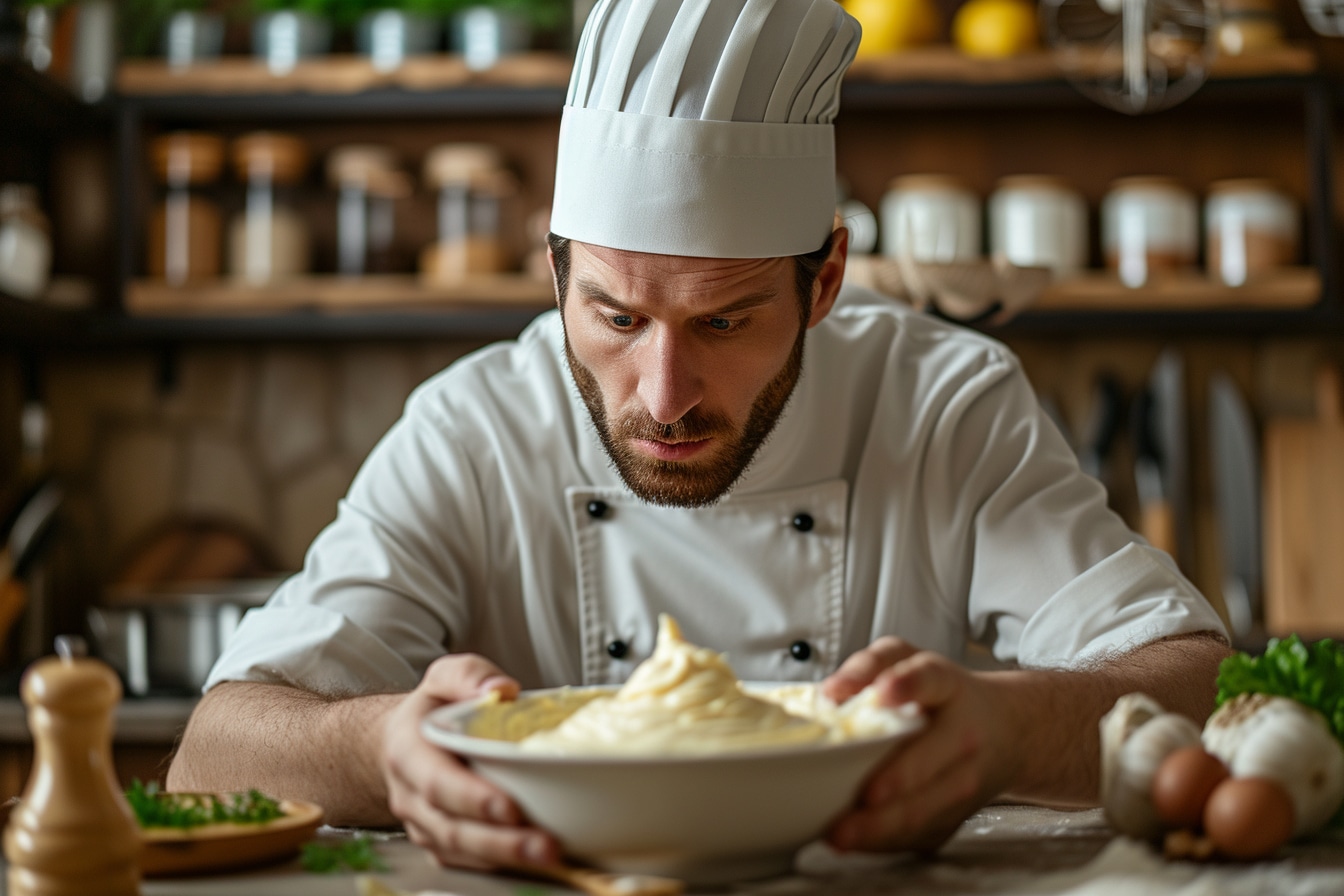Mastering Mayonnaise Mishaps: The Science Behind Failed Emulsions and Successful Fixes

Cooking is an art and a science, immersed in a ballet of flavors, textures and aromas. At the heart of this culinary dance, sauces hold a special place, imposing their character and linking the ingredients in perfect harmony. Mayonnaise, this creamy emulsion of egg yolk and oil, is one of the basic preparations whose apparent simplicity actually hides a technical complexity that can sometimes lead to failure. But what makes mayonnaise not set? And how can we rectify the situation?
Mayonnaise Basics
A wise chef knows that every detail counts in creating impeccable mayonnaise. The basic ingredients, although few in number, must be chosen carefully and combined under precise conditions to form the desired emulsion.
The importance of temperature: The mayonnaise ingredients should be at room temperature to promote emulsion. An egg yolk that is too cold can prevent the fat molecules from bonding with the water and vinegar, while a temperature that is too high risks cooking the egg.
Quality of ingredients: Successful mayonnaise starts with the highest quality ingredients possible. Fresh eggs have lecithins, the ’emulsifying’ elements of the yolk, which are more active and a good quality oil will provide not only taste, but a silkier texture.
The choice of oil: The oil used influences the taste and stability of your mayonnaise. Oils with a strong flavor like olive oil will give a strong character to your mayonnaise while neutral oils like sunflower oil will provide a discreet backdrop.
Common mistakes
Making mayonnaise requires precision and particular attention. Let’s look at common mistakes that can lead to failure.
Add oil too quickly
The emulsion process takes time and patience. Adding the oil drop by drop at the beginning is crucial. Pouring too quickly can break the emulsion and cause the mayonnaise to ‘spin’.
Not beating enough
The driving force behind creating mayonnaise is constant stirring. It is imperative to whisk the mixture vigorously to disperse the oil and allow the formation of a stable emulsion.
Using poor quality ingredients
Poor quality ingredients can compromise both the taste and texture of mayonnaise. Bad egg yolks with fewer emulsifying agents or rancid oil can be the culprits in a culinary disaster.
Diagnosing a Failed Mayonnaise

There are various signs when a mayonnaise emulsion is not setting.
The consistency is too liquid
Mayonnaise should have a creamy texture and hold firm on the spoon. If your preparation remains liquid after incorporating a good quantity of oil, this is an indicator of failure.
Separation of elements
A mayonnaise that has gone sour can be recognized by the separation of the components, with a layer of oil floating on top or lumps forming.
How to make up for mayonnaise?
Faced with mayonnaise that refuses to set, it is possible to rectify the situation with a few tips.
Start again with a new egg yolk: Mix a new egg yolk in a clean bowl, and slowly pour in the mayonnaise, whisking vigorously.
Use mustard: Mustard, which is another natural emulsifying agent, can help stabilize the preparation. Add a teaspoon of mustard to your mixture and whisk to reassemble the sauce.
Water bath temperature: If the mayonnaise seems unrecoverable, it can be heated in a bain-marie over very low heat while whisking, until some of the oil is absorbed and the emulsion begins to form again.
The secrets to perfect mayonnaise
To master this essential part of French gastronomy, you must respect certain infallible principles.
The right equipment
A stable bowl and appropriate utensils go a long way to making mayonnaise. A whisk held firmly in hand will ensure a homogeneous emulsion.
Introduction of oil
The key to a successful emulsion lies in how you incorporate the oil. Patience and meticulousness are essential. Start with small amounts, gradually increasing the flow of oil as the mayison begins to set.
The finesse of the gesture
The act of whipping is not limited to brute force. There is a finesse, a pace to be respected so as not to rush the emulsion.
Adaptations and variations
Once the basic technique is mastered, mayonnaise opens up to innovation. The integration of herbs, condiments or citrus juices can transform a simple mayonnaise into a full-fledged gourmet variation.
Garlic mayonnaise : the addition of garlic or raw garlic can give rise to an aioli sauce, similar to mayonnaise with Mediterranean accents.
Lemon mayonnaise : The acidity of lemon can bring a welcome freshness, especially when served with seafood.
Herb mayonnaise : For lovers of greenery, common finely chopped herbs such as parsley, tarragon or chervil introduce an interesting plant dimension.
Mayonnaise is much more than just a side dish. It represents an alchemy between ingredients, technique and imagination. Its preparation, although it can be intimidating at first glance, becomes second nature with practice. A mayonnaise that slips away actually offers an opportunity for learning, for understanding the underlying mechanisms that govern cooking, an art of perpetual transformation.
As long as curiosity and perseverance remain on the menu, cooking continues to reveal its secrets and successes, making each attempt, whether crowned with success or tempered by apparent failure, another page in the great book of gastronomic discoveries. Cooking is an invitation to explore, experiment and, ultimately, savor not only the food but also the lessons it teaches us about the infinite possibilities offered by ingredients, technique and creativity.
Comments
Leave a comment